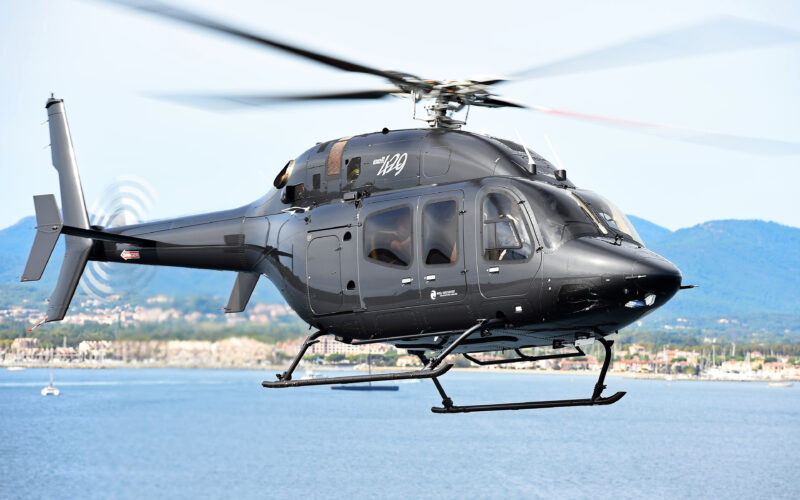The Bell 429 GlobalRanger is a versatile, twin-engine helicopter that is ideal for a wide range of missions, including EMS, law enforcement, search and rescue, and corporate transportation. One of the most important aspects of any helicopter is its performance capabilities, and the Bell 429 GlobalRanger does not disappoint in this regard. In this article, we will take a closer look at the Bell 429 GlobalRanger’s cruise speed, top speed, and range, and what these performance metrics mean for pilots and operators.
Bell 429 GlobalRanger Overview
Before we dive into the performance metrics of the Bell 429 GlobalRanger, let’s take a quick look at the helicopter’s design and capabilities. The Bell 429 GlobalRanger is a twin-engine, medium-lift helicopter that was designed and produced by Bell Helicopter Textron. The helicopter features a spacious, modern cockpit with advanced avionics, a large cabin that can accommodate up to eight passengers or medical personnel, and a rear loading ramp for easy access. The Bell 429 GlobalRanger is powered by two Pratt & Whitney Canada PW207D1 turboshaft engines, each rated at 617 shp.
Performance Metrics
Cruise Speed
The Bell 429 GlobalRanger has a maximum cruise speed of 150 knots (278 km/h), making it one of the fastest helicopters in its class. The helicopter’s cruise speed is a critical performance metric for operators, as it determines how quickly the aircraft can travel between locations. At a cruise speed of 150 knots, the Bell 429 GlobalRanger can cover a distance of 345 nautical miles (639 km) in just two hours and fifteen minutes.
Top Speed
The Bell 429 GlobalRanger has a maximum speed of 157 knots (291 km/h), which is achieved in level flight. The helicopter’s top speed is another important performance metric, as it determines the aircraft’s maximum speed in emergency situations or during high-speed transport missions.
Range
The Bell 429 GlobalRanger has a maximum range of 411 nautical miles (762 km) with standard fuel tanks. With optional auxiliary fuel tanks, the range can be extended up to 504 nautical miles (933 km). The helicopter’s range is an important performance metric for operators, as it determines how far the aircraft can travel without needing to refuel.
Fuel Efficiency
The Bell 429 GlobalRanger is designed to be highly fuel-efficient, with a fuel burn rate of approximately 222 liters per hour. The helicopter’s fuel efficiency is an important consideration for operators, as it affects both the operating costs and environmental impact of the aircraft.
Payload Capacity
The Bell 429 GlobalRanger has a maximum payload capacity of 1,510 pounds (685 kg). The helicopter’s payload capacity is an important performance metric for operators, as it determines how much weight the aircraft can carry in addition to the crew and fuel.
How Do These Metrics Impact Operations?
The performance metrics of the Bell 429 GlobalRanger have a significant impact on the helicopter’s operations. The helicopter’s high cruise speed and range make it ideal for missions that require fast transport over long distances, such as EMS, law enforcement, and search and rescue. The helicopter’s top speed is also important for emergency situations or high-speed transport missions. The fuel efficiency of the Bell 429 GlobalRanger is another important consideration for operators, as it affects the operating costs and environmental impact of the aircraft. A high payload capacity is also important for missions that require the transportation of equipment, supplies, or additional personnel.
The performance metrics of the Bell 429 GlobalRanger allow for greater mission flexibility and efficiency, making it a top choice for a variety of industries. Whether it’s transporting patients to hospitals, aiding in search and rescue missions, or providing transportation for corporate executives, the Bell 429 GlobalRanger’s capabilities make it a reliable and versatile option.
Maintenance and Serviceability
In addition to its performance capabilities, the Bell 429 GlobalRanger is also designed with maintenance and serviceability in mind. The helicopter features a modular design that allows for easy access to critical components, reducing maintenance time and costs. The aircraft also features advanced diagnostic and health monitoring systems, which help operators identify potential issues before they become major problems.
Bell Helicopter Textron also provides comprehensive maintenance and support services for the Bell 429 GlobalRanger, including technical assistance, maintenance training, and parts support. These services ensure that operators can maintain their aircraft to the highest standards, ensuring optimal performance and safety.

The Bell 429 GlobalRanger is a versatile and high-performing helicopter that is ideal for a variety of missions. Its impressive performance metrics, including its cruise speed, top speed, range, fuel efficiency, and payload capacity, make it a top choice for industries such as EMS, law enforcement, and search and rescue. The aircraft’s modular design and advanced diagnostic systems also make it easy to maintain and service, ensuring optimal performance and safety for operators.
Frequently Asked Questions
- What is the Bell 429 GlobalRanger’s cruise speed?
The Bell 429 GlobalRanger has a maximum cruise speed of 150 knots (278 km/h).
- What is the Bell 429 GlobalRanger’s top speed?
The Bell 429 GlobalRanger has a maximum speed of 157 knots (291 km/h), which is achieved in level flight.
- What is the Bell 429 GlobalRanger’s range?
The Bell 429 GlobalRanger has a maximum range of 411 nautical miles (762 km) with standard fuel tanks.
- How fuel-efficient is the Bell 429 GlobalRanger?
The Bell 429 GlobalRanger has a fuel burn rate of approximately 222 liters per hour.
- What is the Bell 429 GlobalRanger’s maximum payload capacity?
The Bell 429 GlobalRanger has a maximum payload capacity of 1,510 pounds (685 kg).